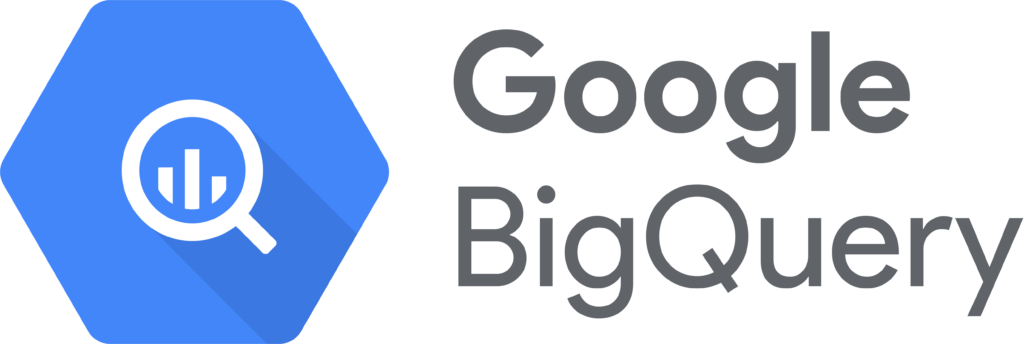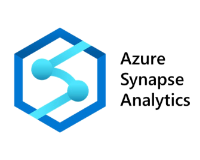Introduction
When it comes to cloud data warehouse options, there is no shortage of options available. Amazon Redshift, Google BigQuery, Microsoft Azure Synapse Analytics, and Snowflake all offer powerful solutions for businesses looking to move their data storage and analysis operations into the cloud. But which of these four contenders reigns supreme? In this post, we will take a closer look at each of these cloud data warehouse options and decide which one is the best choice for businesses.
Why Cloud-based Data Warehousing?

Cloud-based data warehousing offers numerous benefits and advantages over traditional on-premise solutions. First and foremost, it provides businesses with the flexibility to scale their data storage and analysis operations as needed, without the need for costly infrastructure investments. With cloud-based data warehousing, companies can easily increase or decrease their storage capacity and computing power to meet their changing needs.
Additionally, cloud-based data warehousing enables real-time data processing and analysis, allowing businesses to make faster and more informed decisions. This is especially crucial in today’s fast-paced business environment, where data is constantly being generated and needs to be analyzed in real-time.
Furthermore, cloud-based data warehousing offers improved data accessibility and collaboration. Data can be accessed and analyzed from anywhere, at any time, allowing teams to work together more efficiently and effectively.

Key Features of Amazon Redshift
Amazon Redshift offers a range of key features that make it a strong contender in the cloud data warehouse space. One of its standout features is its columnar storage architecture, which enables high-performance data analysis and query processing. This architecture allows for faster query performance, as only the columns needed for a particular query are read, reducing I/O operations and increasing efficiency.
Another key feature of Amazon Redshift is its ability to easily scale compute and storage resources. With Redshift, businesses can scale up or down their data warehousing capacity based on their needs, ensuring optimal performance and cost-efficiency. Additionally, Redshift offers automated backups and replication to ensure data durability and availability.
Furthermore, Amazon Redshift integrates seamlessly with other Amazon Web Services (AWS) products, such as AWS Glue for data ingestion and transformation, and Amazon QuickSight for data visualization. This integration streamlines the entire data analytics workflow and allows for a more efficient and cohesive data analysis process.
Key Features of Google BigQuery

Google BigQuery offers a range of powerful features that make it a formidable player in the cloud data warehouse space. One of its key features is its blazing fast query performance. BigQuery leverages its distributed computing infrastructure to process queries in parallel, allowing for rapid analysis of large datasets. Whether you’re working with terabytes or petabytes of data, BigQuery can handle it with ease.
Another standout feature of BigQuery is its ability to handle semi-structured data, such as JSON and Avro. This means that you can store and analyze complex data structures without the need for costly data transformations. BigQuery also offers a range of advanced analytics functions, such as machine learning integration and geographic functions, enabling you to gain deeper insights from your data.
Additionally, BigQuery integrates seamlessly with other Google Cloud Platform services, such as Google Cloud Storage for data storage and Google Data Studio for data visualization. This integration makes it easy to build end-to-end data pipelines and create insightful dashboards.

Key Features of Microsoft Azure Synapse Analytics
Microsoft Azure Synapse Analytics offers a robust set of key features that make it a formidable competitor in the cloud data warehouse space. One of its standout features is its integrated analytics capabilities, which combine big data and data warehousing into a single, unified service. This integration allows businesses to seamlessly analyze both structured and unstructured data at scale, making it easier to gain insights and make data-driven decisions.
Another key feature of Azure Synapse Analytics is its powerful query performance. With its parallel processing capabilities and distributed architecture, Synapse Analytics can handle large volumes of data and execute complex queries quickly. This means that businesses can derive valuable insights from their data in a timely manner, enabling them to stay ahead of the competition.
Additionally, Synapse Analytics offers advanced data integration and transformation capabilities. It supports a wide range of data sources and provides tools for data cleansing, transformation, and orchestration. This allows businesses to easily ingest, prepare, and manage their data within the same platform, reducing complexity and increasing efficiency.
Furthermore, Azure Synapse Analytics integrates seamlessly with other Microsoft Azure services, such as Azure Data Lake Storage and Azure Machine Learning. This integration enables businesses to build end-to-end data solutions and leverage advanced analytics and machine learning capabilities.
Key Features of Snowflake

Snowflake, another leading cloud data warehouse option, offers a range of key features that set it apart from its competitors. One of its standout features is its unique architecture, which separates compute and storage. This means that businesses can scale their compute resources independently of their storage resources, providing unmatched flexibility and cost-efficiency. With Snowflake, you only pay for the compute resources you actually use, making it a highly cost-effective option.
Another key feature of Snowflake is its ability to handle diverse data types, including structured, semi-structured, and unstructured data. This makes it a versatile solution for businesses dealing with a variety of data sources and formats. Snowflake also provides advanced data sharing capabilities, allowing organizations to securely share data with external parties, such as vendors or partners.
Additionally, Snowflake offers strong security measures to protect your data. It includes features like end-to-end encryption, role-based access control, and multi-factor authentication, ensuring the privacy and integrity of your data.

Cost Comparison: Which One is More Economical?
When it comes to choosing a cloud data warehouse, cost is a crucial factor to consider. Each platform offers different pricing models and it’s important to determine which one is the most economical for your business.
Amazon Redshift offers on-demand pricing, allowing you to pay only for the resources you use. It offers multiple pricing options based on your storage and compute needs. This flexibility can be cost-effective for businesses with varying workloads.
Google BigQuery operates on a consumption-based pricing model, where you pay for the amount of data processed and stored. This can be beneficial for businesses with unpredictable or fluctuating workloads, as you only pay for what you use.
Microsoft Azure Synapse Analytics offers a flexible pricing model that combines on-demand and provisioned capacity pricing. This allows you to choose the most cost-effective option based on your usage patterns.
Snowflake offers a pay-as-you-go pricing model, where you pay for the compute and storage resources used. This provides cost efficiency by scaling resources independently and only paying for what you need.
Scalability and Performance Comparison: Who Comes Out on Top?

When it comes to scalability and performance in cloud data warehousing, all four contenders – Amazon Redshift, Google BigQuery, Microsoft Azure Synapse Analytics, and Snowflake – offer impressive capabilities. Each platform has its strengths and unique features that contribute to its scalability and performance.
Amazon Redshift boasts a columnar storage architecture that enables efficient query processing and high-performance data analysis. With its ability to easily scale compute and storage resources, businesses can ensure optimal performance as their data needs grow. Redshift’s integration with other AWS products further enhances its scalability and performance, providing a seamless data analytics workflow.
Google BigQuery, on the other hand, stands out for its lightning-fast query performance. Leveraging its distributed computing infrastructure, BigQuery can handle massive datasets and process complex queries with ease. Its support for semi-structured data and advanced analytics functions also contribute to its scalability and performance, enabling businesses to gain deeper insights from their data.
Microsoft Azure Synapse Analytics combines big data and data warehousing into a single, unified service, offering integrated analytics capabilities that enhance scalability and performance. With its parallel processing capabilities and distributed architecture, Synapse Analytics can handle large volumes of data and execute complex queries rapidly. Its advanced data integration and transformation capabilities further contribute to its scalability and performance.
Snowflake’s unique architecture, which separates compute and storage, provides unmatched scalability and cost-efficiency. By scaling compute resources independently of storage, businesses can optimize performance while only paying for what they need. Additionally, Snowflake’s ability to handle diverse data types and its robust security measures further enhance its scalability and performance.

Ease of Use Comparison: Which One is Easier to Work With?
When it comes to choosing a cloud data warehouse, ease of use is a crucial factor to consider. After all, you want a platform that allows you to seamlessly store, manage, and analyze your data without unnecessary complications. So, which of the four contenders – Amazon Redshift, Google BigQuery, Microsoft Azure Synapse Analytics, and Snowflake – is the easiest to work with?
Amazon Redshift offers a user-friendly interface and comprehensive documentation, making it relatively easy to get started. It integrates seamlessly with other AWS products, streamlining the entire data analytics workflow. However, some users may find the initial setup process a bit complex.
Google BigQuery is known for its simplicity and ease of use. Its web-based interface is intuitive and straightforward, allowing users to easily run queries and analyze data. The platform also provides detailed documentation and tutorials, making it easy to navigate for both beginners and experienced users.
Microsoft Azure Synapse Analytics offers a user-friendly interface that simplifies data integration and management tasks. Its drag-and-drop capabilities make it easy to build data pipelines and automate workflows. Additionally, Azure Synapse Analytics provides extensive documentation and resources, helping users maximize the platform’s capabilities.
Snowflake, with its cloud-native architecture, provides a user-friendly interface that simplifies data warehousing and analysis. Its intuitive web interface and SQL-based querying make it easy for users to interact with the platform. Snowflake also offers comprehensive documentation and support resources to assist users throughout their data journey.
Security Comparison: Which Platform Offers Better Protection for Your Data?

When it comes to data warehousing in the cloud, security is a top concern for businesses. You want to ensure that your data is protected and that the platform you choose has robust security measures in place. In this section, we will compare the security features of Amazon Redshift, Google BigQuery, Microsoft Azure Synapse Analytics, and Snowflake to determine which platform offers better protection for your data.
Amazon Redshift takes security seriously with features such as end-to-end encryption, both at rest and in transit, to safeguard your data from unauthorized access. It also provides granular access control through its role-based access control (RBAC) system, allowing you to define and manage user permissions. Redshift also offers options for data encryption using AWS Key Management Service (KMS), giving you full control over your encryption keys.
Google BigQuery also prioritizes data security by implementing strong encryption methods, both at rest and in transit. It provides granular access controls and integrates with Google Cloud Identity and Access Management (IAM) for user authentication and authorization. BigQuery also offers auditing and logging capabilities, allowing you to track and monitor access to your data.
Microsoft Azure Synapse Analytics offers a comprehensive set of security features to protect your data. It provides robust encryption mechanisms, both at rest and in transit, using Azure Storage Service Encryption and SSL/TLS protocols. Azure Synapse Analytics also offers advanced access controls through Azure Active Directory (Azure AD), enabling you to manage user identities and permissions effectively.
Snowflake, too, prioritizes data security with its multi-layered approach. It provides end-to-end encryption using strong encryption algorithms, both in transit and at rest. Snowflake also offers features such as access control policies, multi-factor authentication, and IP whitelisting to ensure only authorized users can access your data. Additionally, Snowflake’s unique architecture separates compute and storage, adding an extra layer of security by isolating compute resources.

Factors to Consider While Choosing a Cloud Data Warehouse Provider
When it comes to choosing a cloud data warehouse provider, there are several factors that you need to consider. Making the right choice is crucial for your business as it can impact the scalability, performance, integration, security, and cost-effectiveness of your data warehouse. Here are some factors to keep in mind while making your decision.
Firstly, consider the scalability of the provider. How well can it handle the growth of your data? Look for a provider that can seamlessly scale from a few hundred gigabytes to petabytes of data without compromising on performance.
Secondly, evaluate the performance of the provider. How quickly can it process queries and deliver insights from your data? Look for a provider with a parallel processing architecture that can efficiently handle complex data workloads.
Next, consider the integration capabilities of the provider. Can it easily integrate with other tools and services that you use in your business? Look for a provider that offers seamless integration with the tools and services that are essential for your data analysis workflow.
Security is another critical factor to consider. How does the provider ensure the confidentiality and integrity of your data? Look for features like encryption at rest and in transit, as well as fine-grained access controls to protect your data from unauthorized access.
Lastly, consider the cost-effectiveness of the provider. How does its pricing model align with your budget and usage patterns? Look for a provider that offers a flexible pricing model based on your actual resource usage, so you only pay for what you use.
Final Verdict: The Winner of the Data Warehousing Battle Royale

After closely examining the key features, cost comparison, scalability and performance, ease of use, and security of Amazon Redshift, Google BigQuery, Microsoft Azure Synapse Analytics, and Snowflake, it’s time to announce the winner of the data warehousing battle royale. Drumroll, please!
And the winner is… It’s a tough decision, as each platform offers impressive capabilities and features. But if we have to choose one, the crown goes to Snowflake.
Snowflake stands out with its unique architecture, separating compute and storage, which provides unmatched scalability and cost-efficiency. It offers a versatile solution for handling diverse data types and advanced data sharing capabilities. Snowflake’s robust security measures ensure the privacy and integrity of your data.
Please note that the views expressed above are solely my personal opinions and do not reflect the viewpoints of my present or past employers.

